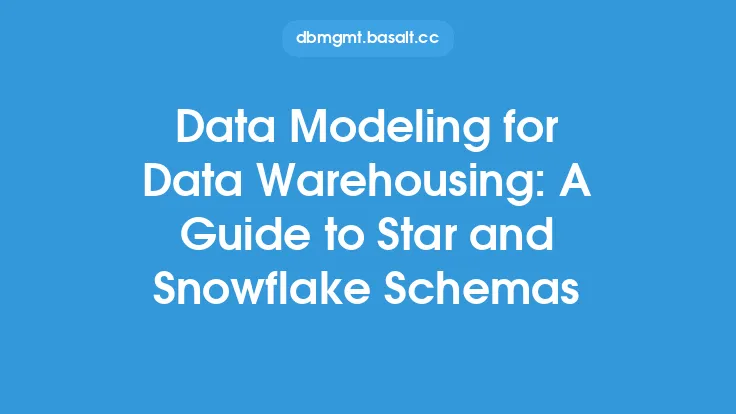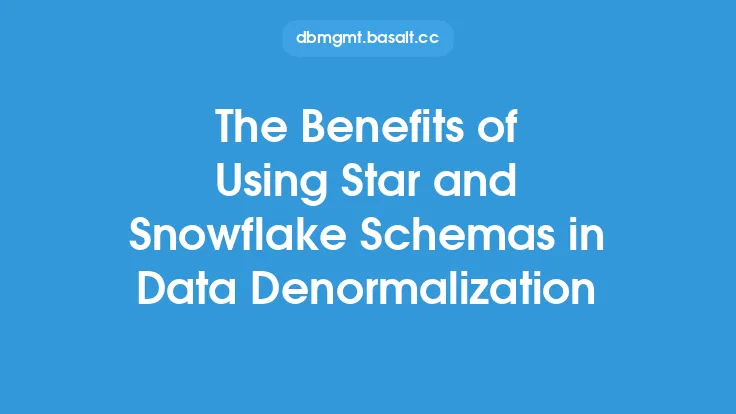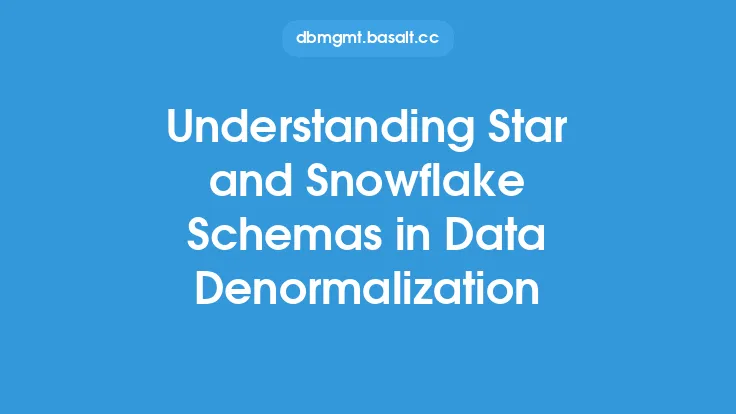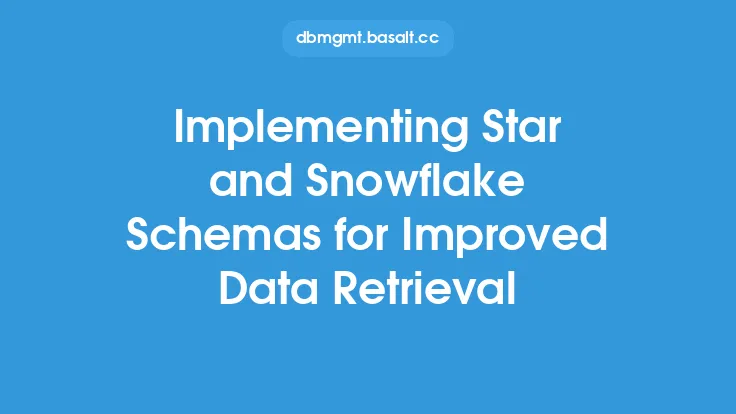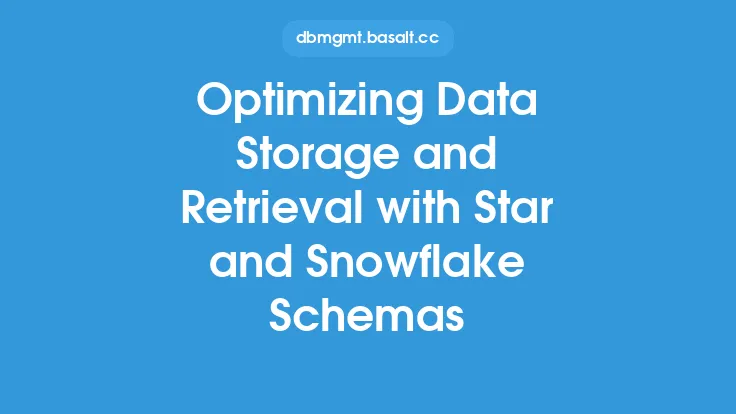Data modeling is a crucial step in the design and development of databases, as it allows developers to create a conceptual representation of the data and its relationships. Among the various data modeling patterns, star and snowflake schemas are two of the most popular and widely used techniques. These schemas are particularly useful in data warehousing and business intelligence applications, where complex data relationships and large amounts of data need to be managed.
Introduction to Star Schemas
A star schema is a data modeling pattern that consists of a central fact table surrounded by dimension tables. The fact table contains the primary data, such as sales or customer information, while the dimension tables provide additional context and descriptive information. The star schema is called as such because the dimension tables are connected to the fact table, resembling the points of a star. This schema is ideal for data warehousing and business intelligence applications, as it allows for efficient querying and analysis of large datasets.
Introduction to Snowflake Schemas
A snowflake schema is an extension of the star schema, where each dimension table is further normalized into multiple related tables. This creates a more complex and detailed structure, with each dimension table connected to the fact table through a series of intermediate tables. The snowflake schema is called as such because the dimension tables are connected to the fact table through a series of tables, resembling the intricate patterns of a snowflake. This schema is useful when there are multiple levels of detail in the dimension data, and a more granular analysis is required.
Designing Star and Snowflake Schemas
When designing a star or snowflake schema, there are several key considerations to keep in mind. First, the fact table should contain the primary data, such as sales or customer information, and should be designed to support the main queries and analysis. The dimension tables should provide additional context and descriptive information, and should be designed to support the filtering and grouping of data. In a snowflake schema, the intermediate tables should be designed to provide additional detail and granularity, and should be connected to the fact table through the dimension tables.
Benefits of Star and Snowflake Schemas
Star and snowflake schemas offer several benefits, including improved query performance, simplified data analysis, and enhanced data integrity. By separating the fact data from the dimension data, these schemas allow for more efficient querying and analysis, as the fact data can be accessed directly without having to navigate through complex relationships. Additionally, the dimension tables provide a clear and consistent structure for the data, making it easier to analyze and understand.
Challenges and Limitations of Star and Snowflake Schemas
While star and snowflake schemas offer several benefits, they also present some challenges and limitations. One of the main challenges is the complexity of the schema, particularly in snowflake schemas, where the multiple levels of detail can make it difficult to navigate and understand the data. Additionally, the normalization of the dimension tables can lead to data redundancy and inconsistencies, particularly if the data is not properly synchronized. Furthermore, the star and snowflake schemas can be inflexible, making it difficult to adapt to changing business requirements or new data sources.
Best Practices for Implementing Star and Snowflake Schemas
To implement star and snowflake schemas effectively, there are several best practices to follow. First, the schema should be designed to support the main queries and analysis, with the fact table containing the primary data and the dimension tables providing additional context and descriptive information. Second, the dimension tables should be normalized to provide additional detail and granularity, while minimizing data redundancy and inconsistencies. Third, the schema should be flexible and adaptable, allowing for easy modification and extension as business requirements change. Finally, the data should be properly synchronized and maintained, to ensure data integrity and consistency.
Tools and Technologies for Star and Snowflake Schemas
There are several tools and technologies available to support the design and implementation of star and snowflake schemas. Data modeling tools, such as Entity-Relationship diagrams and data modeling software, can help to design and visualize the schema. Data warehousing and business intelligence platforms, such as Oracle and Microsoft SQL Server, provide built-in support for star and snowflake schemas, including data loading, querying, and analysis. Additionally, data integration and ETL tools, such as Informatica and Talend, can help to extract, transform, and load data into the schema.
Real-World Applications of Star and Snowflake Schemas
Star and snowflake schemas have a wide range of real-world applications, particularly in data warehousing and business intelligence. For example, a retail company might use a star schema to analyze sales data, with the fact table containing sales information and the dimension tables providing additional context, such as customer demographics and product information. A financial services company might use a snowflake schema to analyze customer transactions, with the fact table containing transaction data and the dimension tables providing additional detail, such as account information and transaction history.
Conclusion
In conclusion, star and snowflake schemas are powerful data modeling patterns that can help to improve the efficiency and effectiveness of data analysis and business intelligence applications. By understanding the design and implementation of these schemas, developers can create robust and scalable data models that support complex data relationships and large amounts of data. While there are challenges and limitations to these schemas, following best practices and using the right tools and technologies can help to overcome these limitations and achieve successful implementation. As data continues to play an increasingly important role in business decision-making, the use of star and snowflake schemas will remain a crucial aspect of data modeling and business intelligence.
